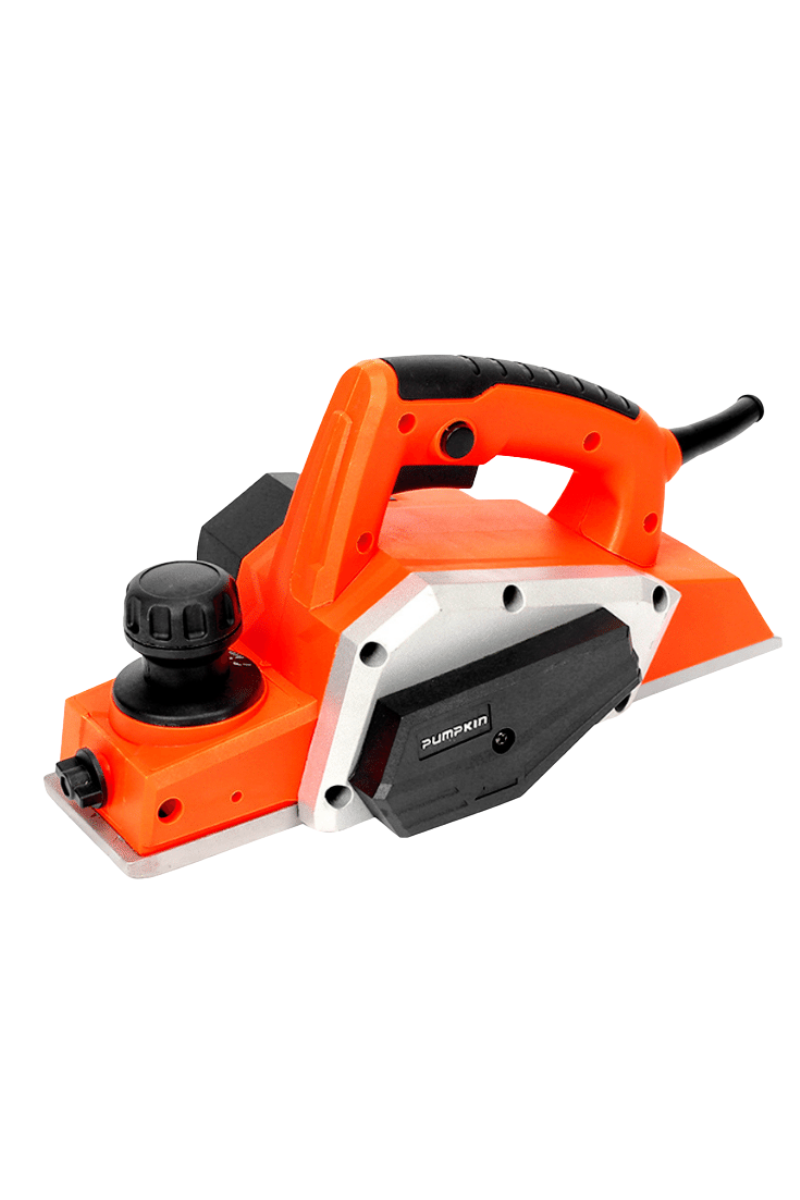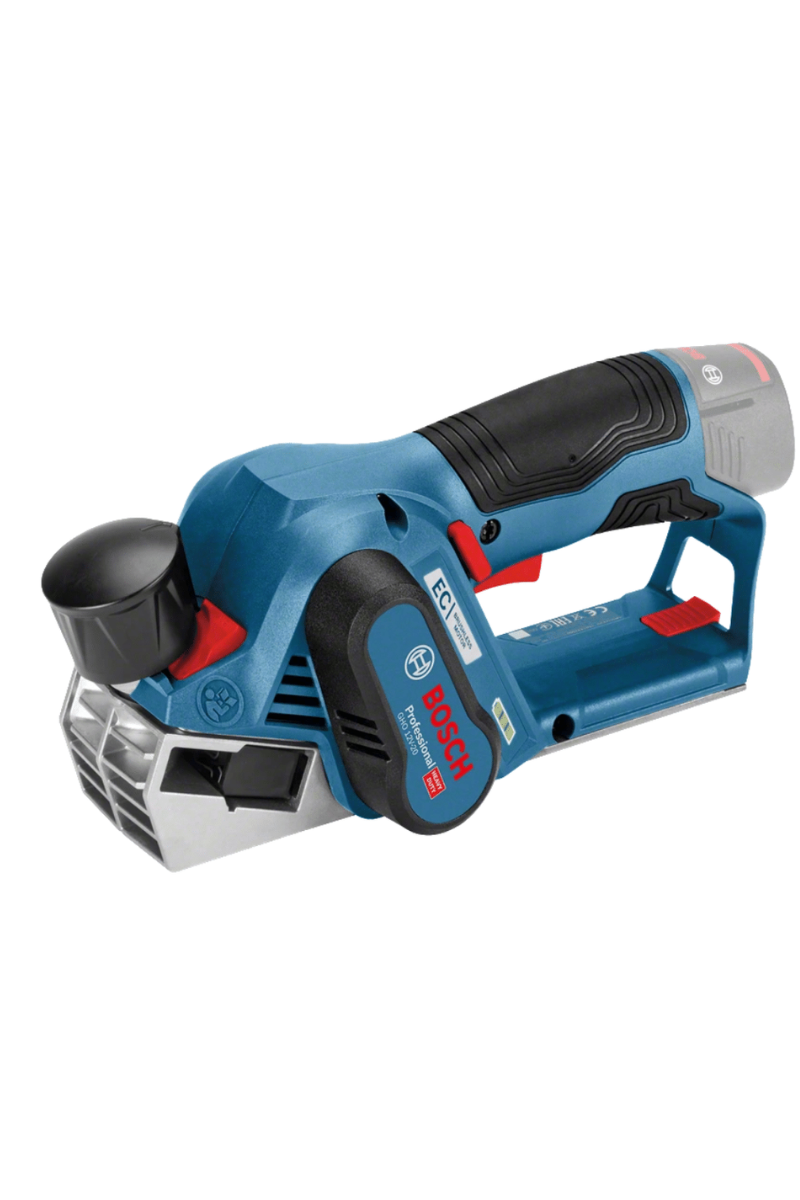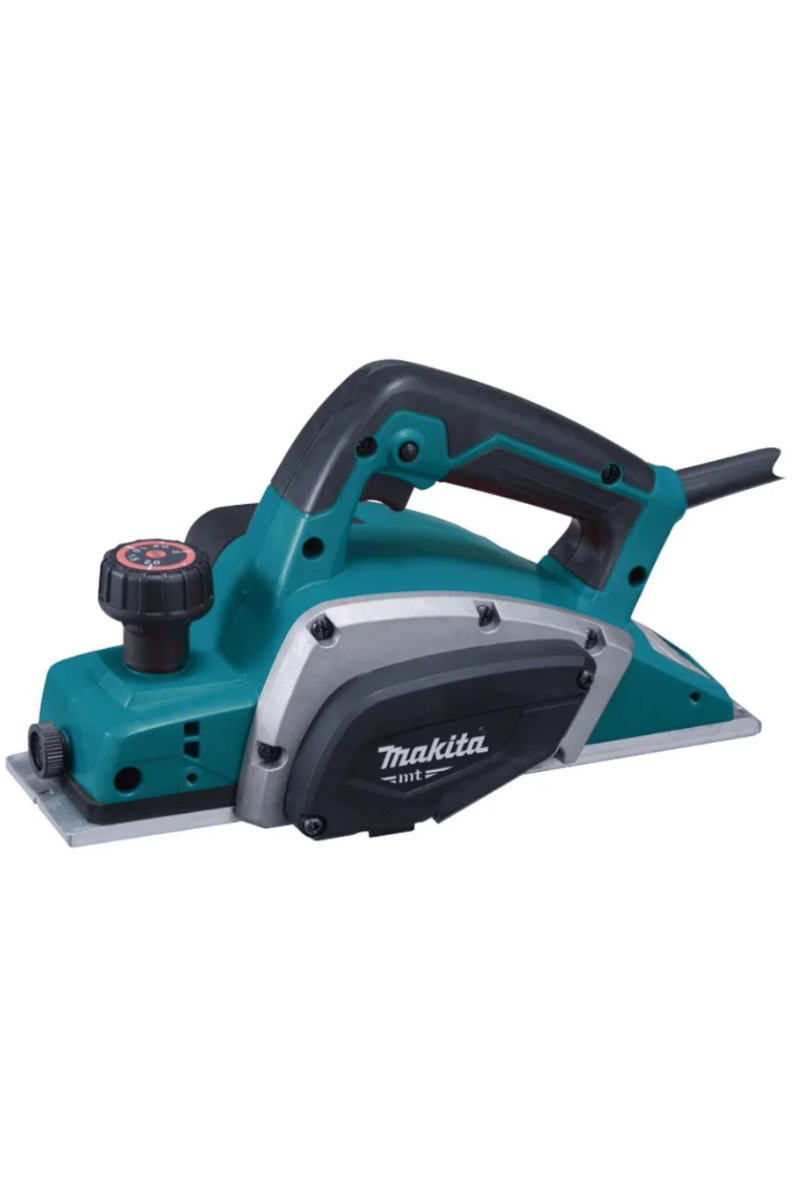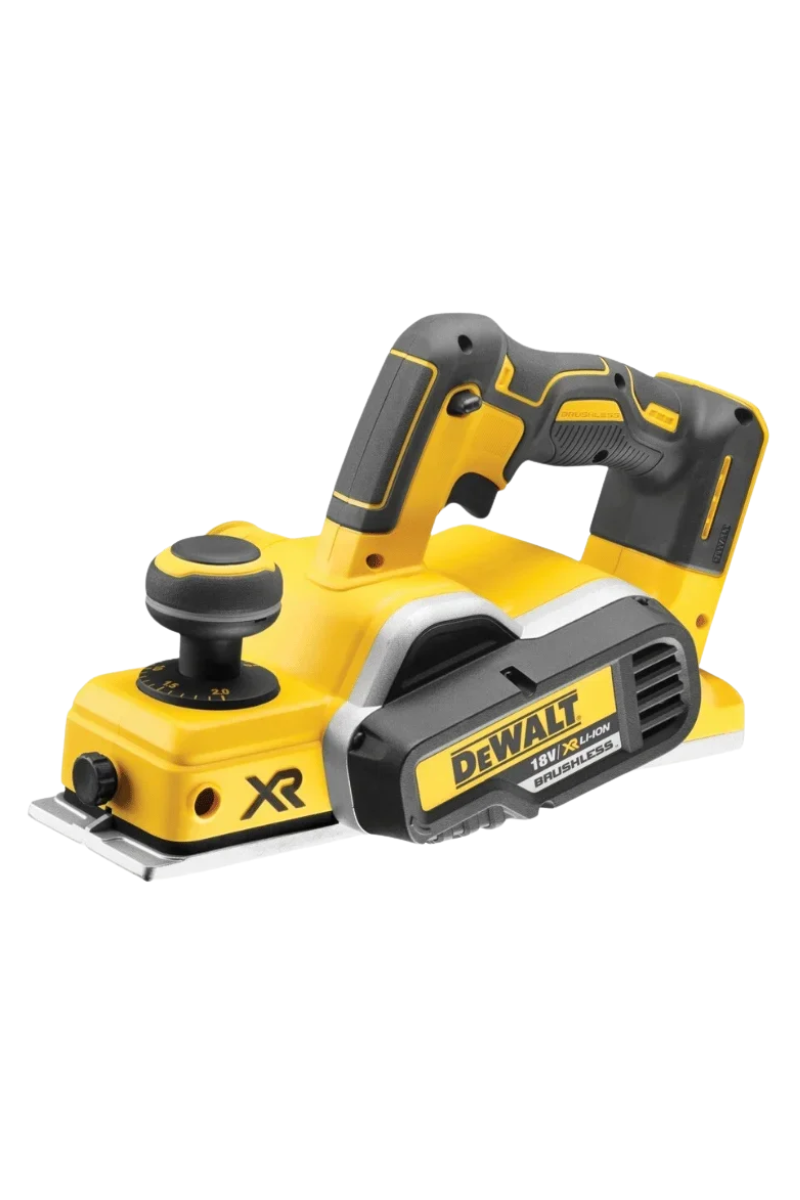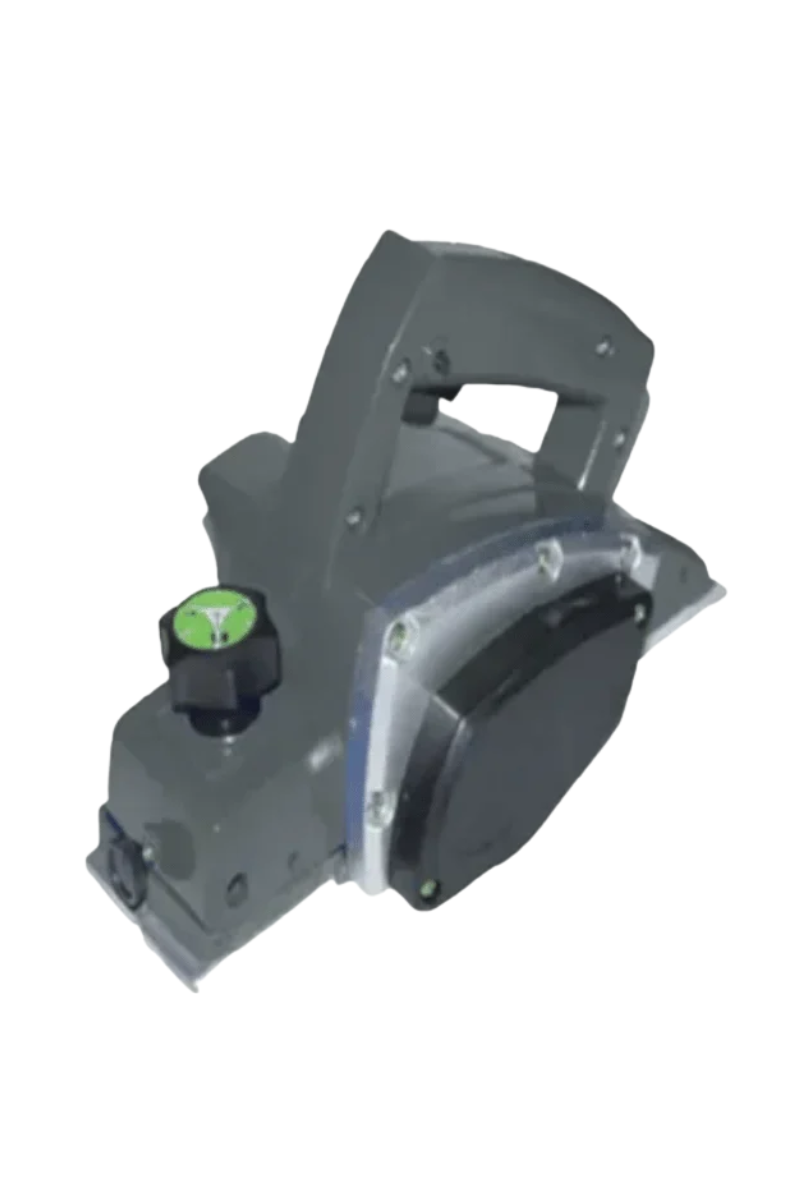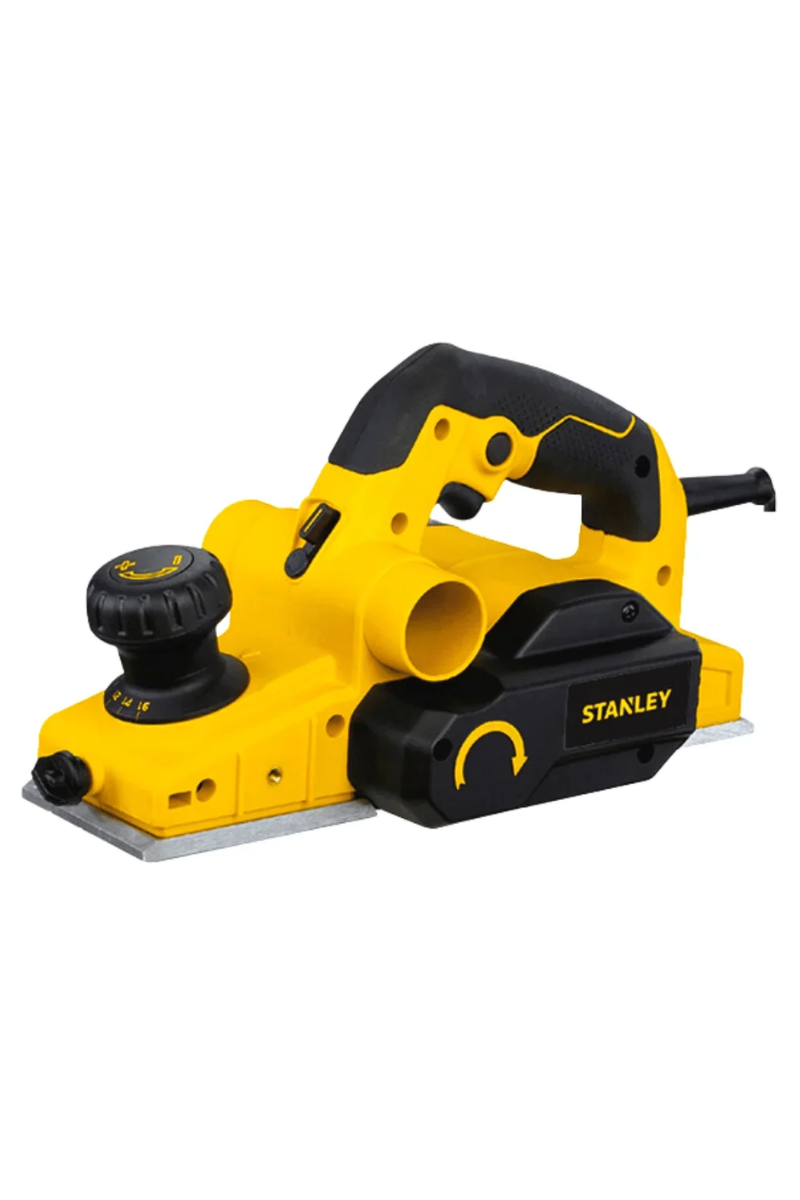Hand Planer: A Woodworking Tool
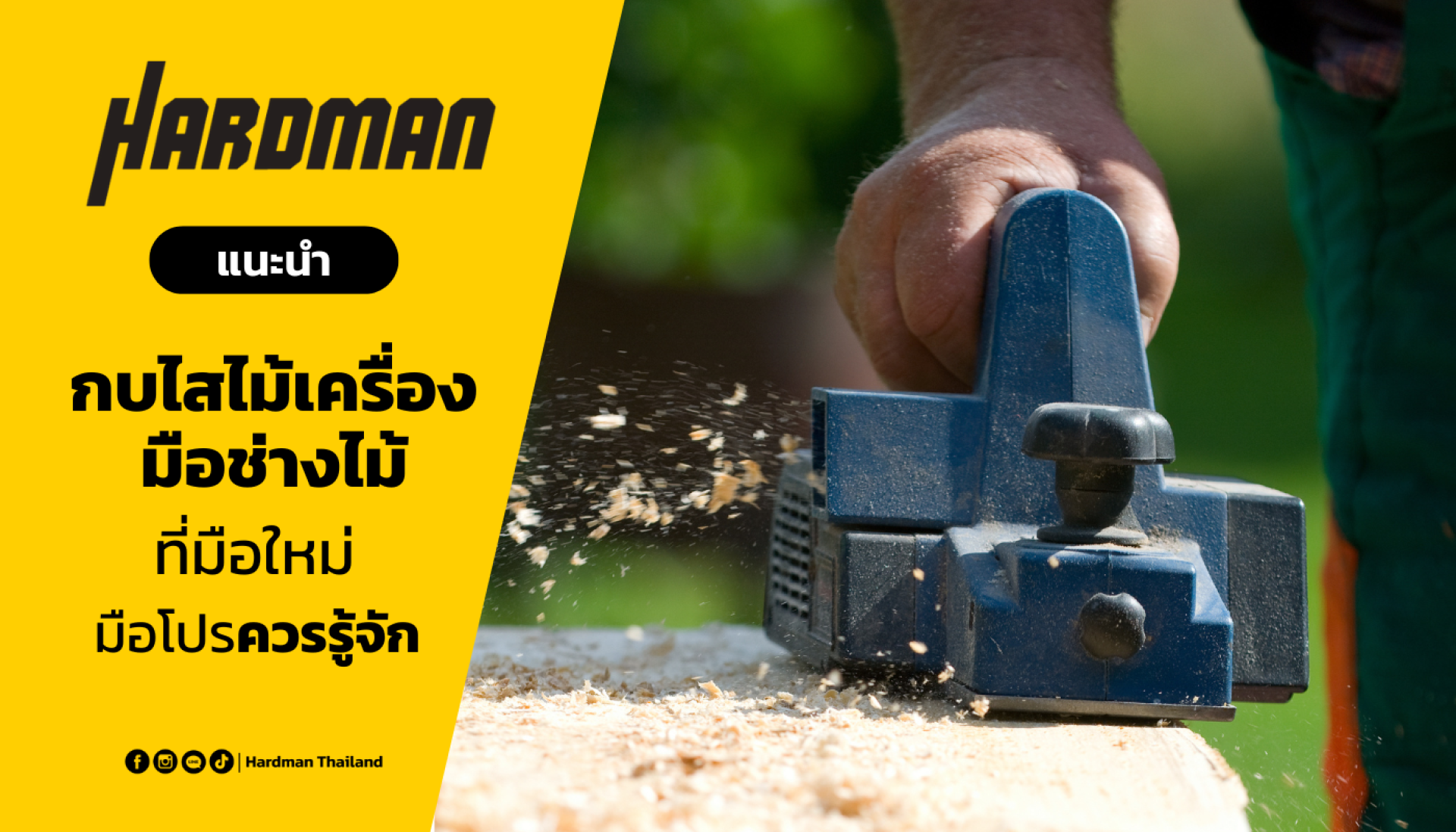
In the world of woodworking, for precision, smoothness, and surface finishing, no tool holds more significance than the hand planer. Whether it's for DIY projects or commercial furniture production, the hand planer remains a steadfast item in the toolkit of professional woodworkers worldwide. With a history spanning hundreds of years, the hand planer is not merely a simple wood-shaving tool; it serves as a medium through which the woodworker meticulously refines every surface, creating a nuanced finish.
What is a Hand Planer
A hand planer (or wood planer) is a tool designed to "shave wood surfaces." Its basic principle involves a blade attached to a flat sole, which moves across the wood surface, removing thin layers of material. This process results in a uniformly smooth surface, eliminates splinters, or reduces the wood's thickness as desired.
Key Functions of a Hand Planer
- Smoothing Wood Surfaces: It excels at making rough or uneven wood grains consistently smooth.
- Adjusting Wood Thickness: Essential for furniture making, ensuring each piece of wood is of uniform size.
- Planing Flat Surfaces: For instance, it's used to neatly trim door edges that bind against the frame.
- Shaping Edges: Perfect for creating rounded or beveled edges on wood as desired.
Beyond general craftsmanship, hand planers are also crucial for fine woodworking, including antique furniture restoration, wood art, or highly detailed repairs on wooden house structures.
Types of Planers
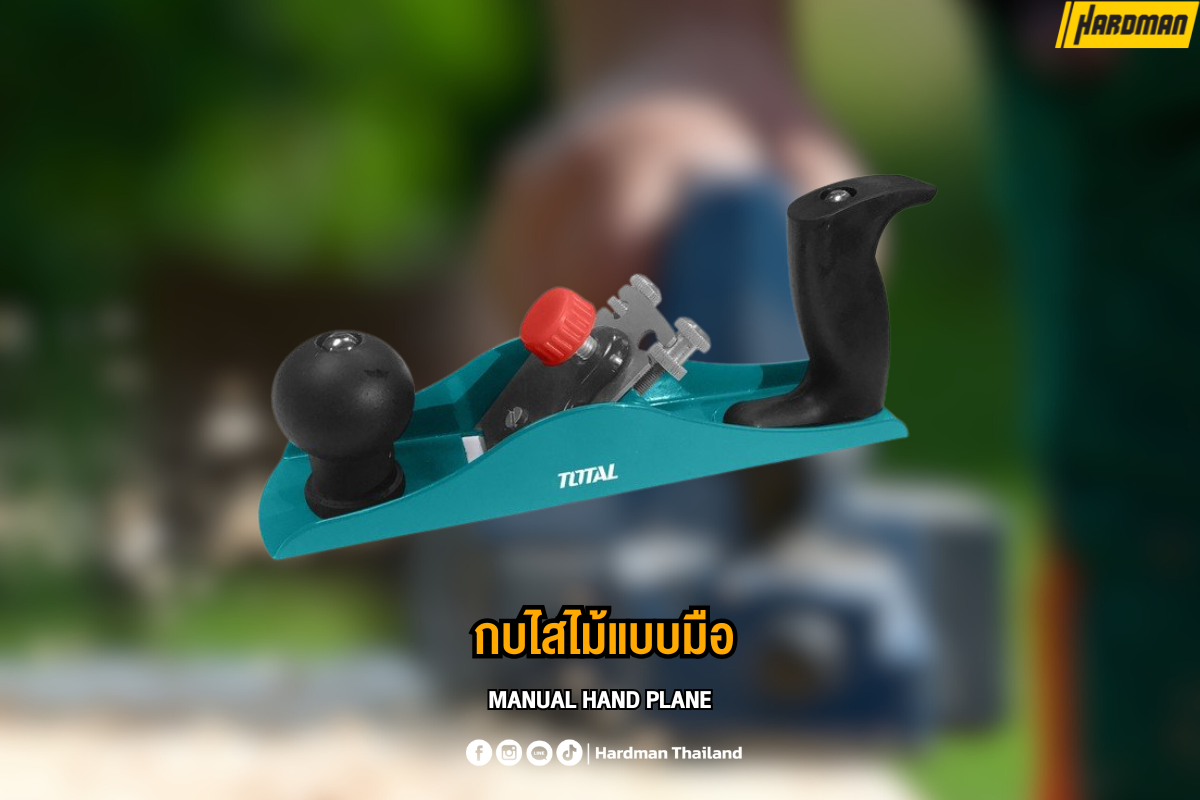
Manual Hand Plane
The manual hand plane is the most traditional and classic type of planer. It relies entirely on manual force, requiring skill, knowledge of planing techniques, and an understanding of wood grain to achieve beautiful results.
Key Characteristics of Manual Hand Planes:
- Tool Material: Available in both cast iron (like Stanley planes) and hardwood (such as traditional Thai planes).
- Adjustable Blade: The depth of the blade can be adjusted to control the thickness of the shaving.
- Suitable for Detailed Work: Ideal for tasks like antique furniture restoration or applying the final finishing touch to a surface.
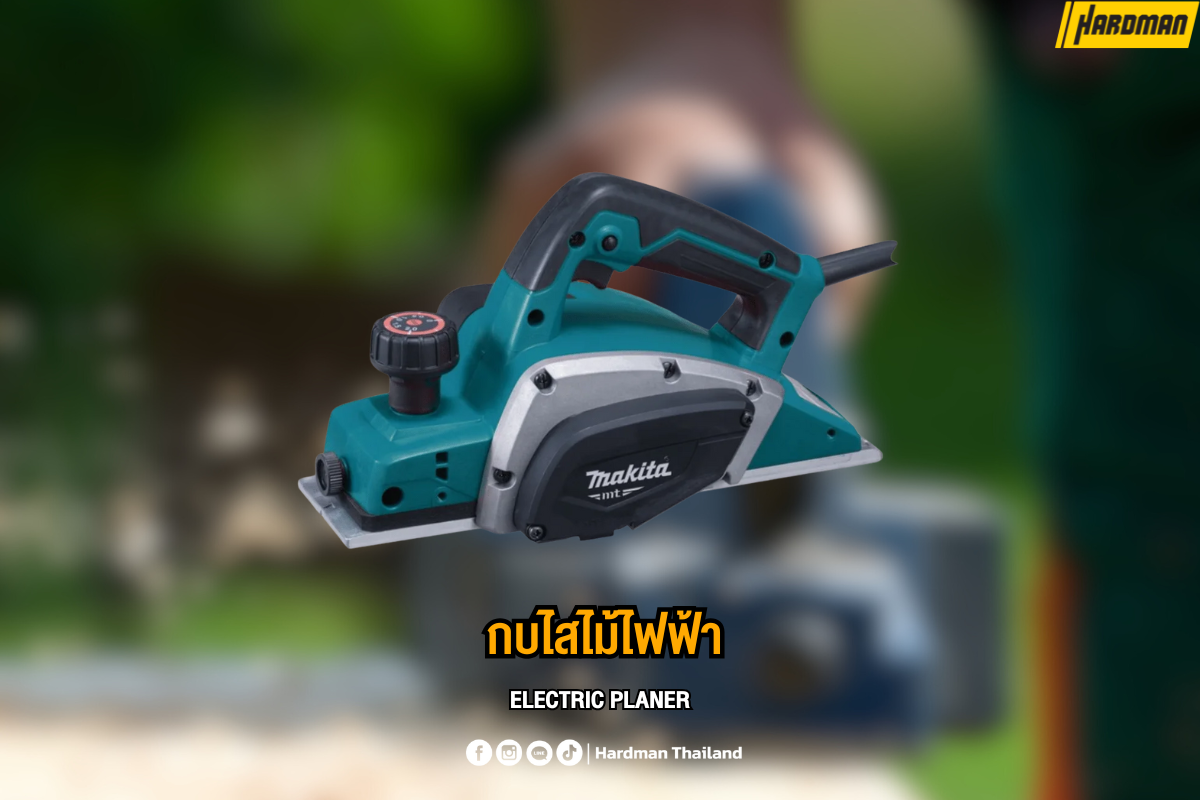
- High Precision: Allows for precise adjustment of planing depth (e.g., from 0.5 mm to 3 mm).
- Saves Effort and Time: Perfect for large volume tasks, such as planing wood for numerous doors and windows.
- Suitable for Beginners: Features good support systems, requiring less skill compared to a manual hand plane.
Detailed Guide to Using a Hand Planer
Using a Manual Hand Plane
- Adjust the blade: Use a screwdriver or lever to adjust the blade so it protrudes slightly (no more than 1-2 mm).
- Check the wood grain: Always plane with the grain. If you plane against the grain, the surface will become wavy or splintered.
- Hold the tool firmly: Grip the front of the plane with one hand and push the handle with the other.
- Apply even pressure: Don't press too hard; let the blade shave the wood on its own momentum.
Using an Electric Planer
- Set the blade depth: Start with the lowest setting (0.5 mm) and gradually increase it as needed.
- Check the machine's readiness: Inspect the plug, blade, and the cleanliness of the blade's grooves.
- Turn the machine on before placing it on the wood: This prevents the blade from immediately striking and damaging the wood.
- Plane consistently: Hold the tool firmly with both hands, move along the wood grain, and avoid stopping in the middle of the workpiece.
Precautions for Using a Planer
Careless use of a planer can cause damage to both the user and the workpiece, especially with high-powered electric planers. Therefore, you should always adhere to the following precautions
- Never Plane Wood Containing Nails: This will immediately damage the blade.
- Avoid Excessive Pressure: Using too much force when planing can cause marks or chips on the wood surface.
- Do Not Use an Electric Planer in Wet Areas: This is crucial for safety to prevent electrical short circuits.
- Never Change Blades While Plugged In: This is life-threatening. Always unplug the tool first.
- Always Wear Protective Gear: This includes safety glasses, a dust mask, and earplugs.
- Always Check the Blade: If the blade is dull, you should sharpen or replace it before use.
Planer Maintenance for Longevity and Performance
Proper maintenance is essential to extend the lifespan of your planer and ensure consistently high-quality woodworking results. Follow these guidelines to keep your tool in top condition
- Clean After Each Use: Use a dry cloth to wipe away all dust, wood shavings, and debris every time you finish using the planer.
- Sharpen Blades Regularly: For manual hand planes, the blade's edge will dull over time. Regular sharpening is crucial to maintain cutting quality.
- Apply Rust-Preventative Oil: Use a light oil, such as machine oil, to wipe down the blade and other metal surfaces of the tool. This prevents rust from forming.
- For Electric Planers: Regularly inspect the power cord, plug, and motor. Never continue to operate the machine if you hear unusual noises or see smoke during use.
- Store in a Dry Place: Avoid storing the planer on a concrete floor or in areas with high humidity, as this can cause it to rust easily.
Applications of a Planer
- Adjusting doors: If a door is too tight or sticks after installation, you can use a planer to adjust the edge for a perfect fit.
- Furniture making: Plane wood surfaces before joining them to ensure a tight, seamless fit.
- Decorating table/chair edges: Make edges smooth or rounded as you like.
- Wooden house repairs: Level wooden floors, ceilings, or roof frames for a precise finish.
- Fine woodworking: For tasks like wood carving, plane the surface to be smooth before adding patterns or colors.
- Refurbishing old wood: Give old furniture, such as cabinet doors or tables, a fresh look.
Recommended: 12 Models of Electric and Cordless Planers from Top Brands
1. PUMPKIN 42223/J-P1820 710W Electric Planer
Specifications:
- Power: 710 W
- Planing Width: 82 mm (3-1/4 inches)
- Maximum Planing Depth: 2 mm
- No-Load Speed: 16,000 RPM
Highlights:
- Affordable price and easy to use, making it suitable for general tasks.
- Lightweight and portable.
- Features a safety system that instantly stops the motor when the switch is released.
- Ideal for:DIY enthusiasts or beginner to intermediate woodworkers.
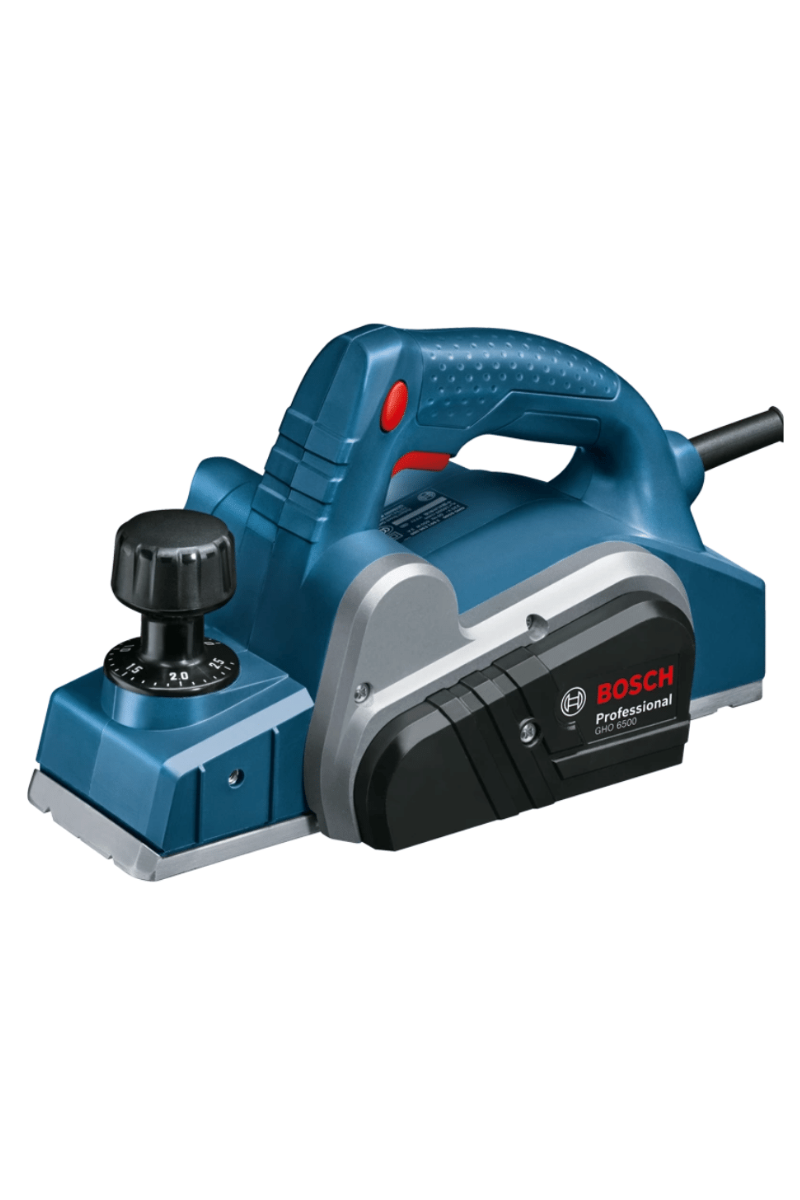 |
Specifications:
- Power: 650 W
- Planing Width: 82 mm
- Maximum Planing Depth: 2.6 mm
- No-Load Speed: 16,500 RPM
Highlights:
- Lightweight, weighing just 2.8 kg.
- Features a durable Woodrazor blade system that's easy to replace.
- The sturdy aluminum base ensures smooth and accurate planing.
- Ideal for:Furniture making and installation work that demands a very fine finish.
3. Bosch GHO 12V-20 Cordless Planer
Specifications:
- Voltage: 12V
- Planing Width: 56 mm
- Maximum Planing Depth: 2 mm
- Weight: 1.5 kg
Highlights:
- Compact and portable, making it perfect for confined areas.
- Uses the Bosch 12V battery system, allowing for compatibility with other Bosch 12V tools.
- Ideal for: repair jobs or detailed work on small parts.
Specifications:
- Power: 710 W
- Planing Depth: 2.6 mm
- Blades: 82 mm Woodrazor blades
- No-Load Speed: 16,500 RPM
Highlights:
- Features a high no-load speed of up to 16,500 RPM for fast, clean cuts.
- The flat base ensures smooth planing and accurate deep cuts.
- Equipped with a dust extraction system that can be connected to a dust bag.
- Ideal for:Professional woodworkers and serious DIYers needing a reliable and powerful planer for various projects.
5. MAKITA M1901B Electric Planer
Specifications:
- Power: 500 W
- Maximum Planing Depth: 2 mm
- Planing Width: 82 mm
Highlights:
- Features a small body that is comfortable to grip, allowing for good control.
- Delivers a smooth finish for general decoration work.
- Offers a mid-range price point, making it suitable for intermediate-level tasks.
6. MAKITA 1804N 5-Inch Electric Planer
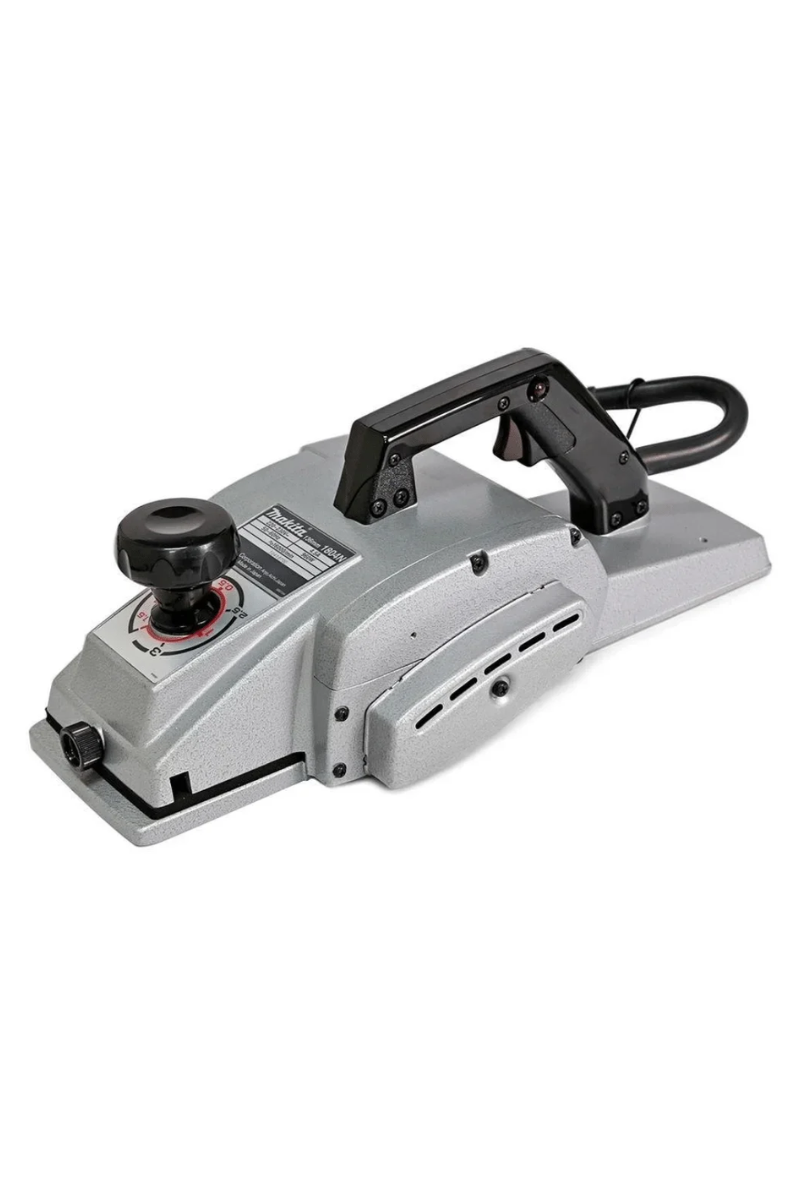 |
Specifications:
- Power: 850 W
- Planing Width: 136 mm (5-3/8 inches)
- Maximum Planing Depth: 2 mm
- Weight: 8.2 kg
Highlights:
- Capable of planing large wood panels in a single pass.
- Ideal for working on large furniture panels, tabletops, and big wooden doors.
- The wide base provides excellent control and stability during use.
- Ideal for:Professional woodworkers specializing in large-scale projects.
7. MAKITA KP0800X Electric Planer
 |
Specifications:
- Power: 620 W
- Planing Width: 82 mm
- Maximum Planing Depth: 2.5 mm
Highlights:
- Features a small, lightweight body, making it easy to handle and maneuver.
- Can achieve a deep cut in a single pass.
- Includes a safety system that stops the motor when the switch is released.
- Ideal for:General woodworking, finishing, and shaping tasks where a balance of power and portability is needed.
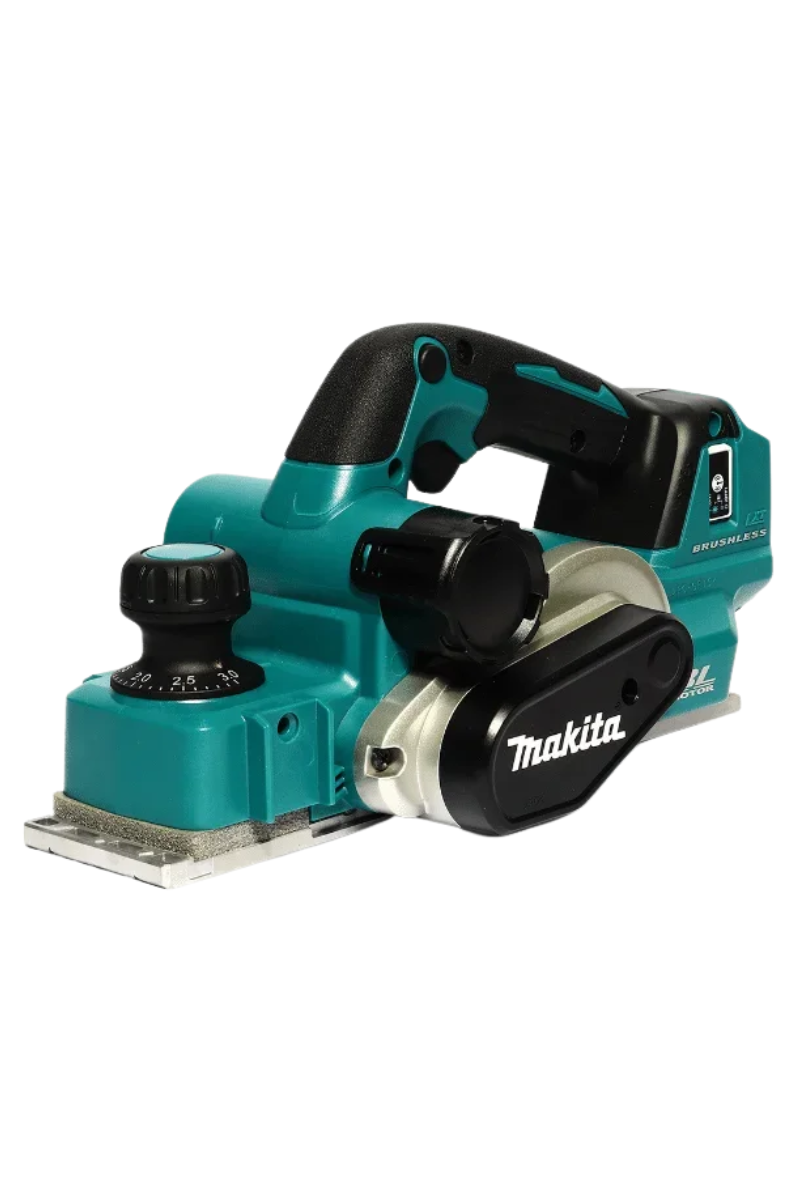 |
Specifications:
- Voltage: 18V
- Planing Width: 82 mm
- Maximum Planing Depth: 3 mm
Highlights:
- Compatible with all MAKITA 18V BL batteries.
- Equipped with a brushless motor for superior durability and efficiency.
- Capable of continuous planing with high durability and without overheating easily.
- Ideal for:Professional tradespeople who need the freedom of a cordless tool without sacrificing performance.
9. MAKITA DKP180Z 18V Cordless Planer (Tool Only)
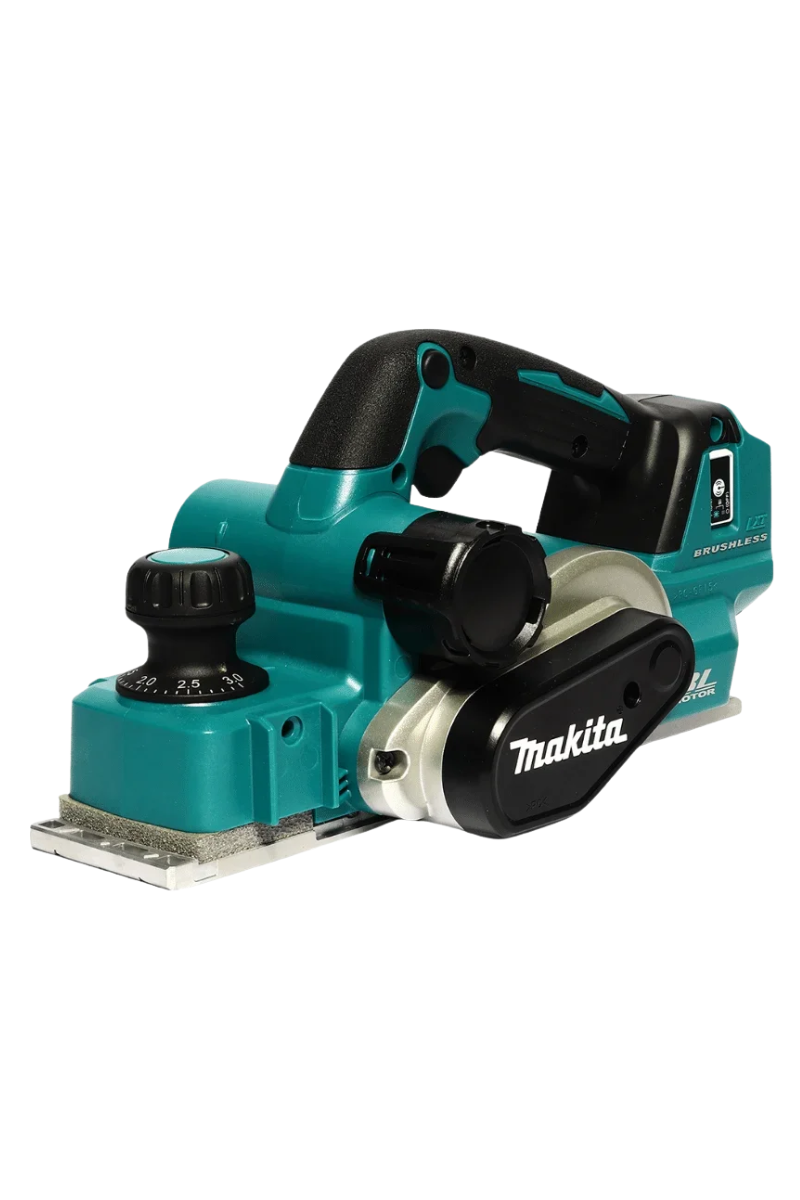 |
Specifications:
- Voltage: 18V
- Planing Width: 82 mm
- Maximum Planing Depth: 2 mm
Highlights:
- Compatible with the MAKITA LXT battery system.
- Compact size makes it ideal for use in confined spaces.
- Ideal for:
- Furniture making and field repairs on wood.
10. DEWALT DCP580N 18V XR Cordless Planer (Tool Only)
|
|
- Voltage: 18V XR
- Maximum Planing Depth: 2 mm
- Planing Width: 82 mm
- Motor: Brushless
Highlights:
- Cordless yet powerful enough for professional applications.
- The brushless motor ensures long continuous use without overheating.
- High safety features, including an immediate blade brake when the trigger is released.
- Compatible with the entire DEWALT 18V XR battery system.
Specifications:
- Power: 650 W
- Planing Width: 82 mm
- Planing Depth: 2 mm
Highlights:
- Low price, making it ideal for general home use.
- Delivers a smooth finish on both solid wood and plywood.
- Its simple design makes blade replacement easy.
- Ideal for: DIY projects, adjusting wooden door panels, or making small furniture repairs.
12. STANLEY STEL630-B1 3-Inch Electric Planer
Specifications:
- Power: 750 W
- Planing Depth: 2 mm
- Planing Width: 82 mm
Highlights:
- Strong, durable design with a well-balanced weight.
- A powerful motor allows for continuous planing.
- Affordably priced, making it suitable for intermediate and professional users.
Summary
A hand planer is more than just a simple tool for shaving wood; it is the "heart" of quality woodworking. By choosing the right type of planer for your needs, understanding the different varieties available, and mastering the proper planing techniques, you can control the beauty of your work from the structural level all the way to the final surface finish. Whether you're a beginner or a seasoned craftsman, the planer is a true companion that belongs in your toolbox.
